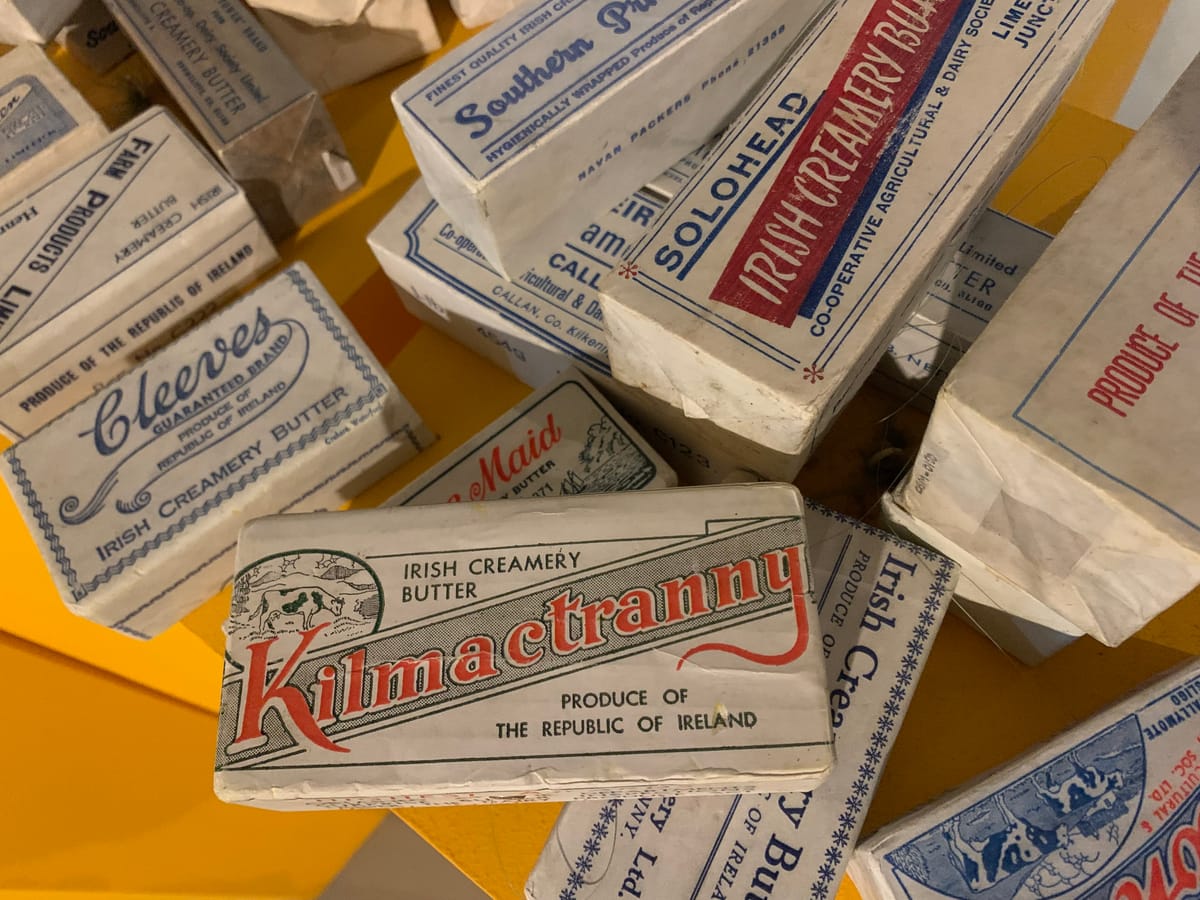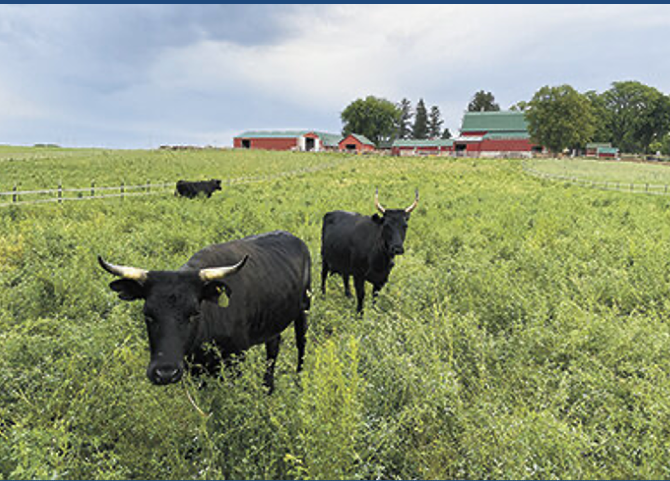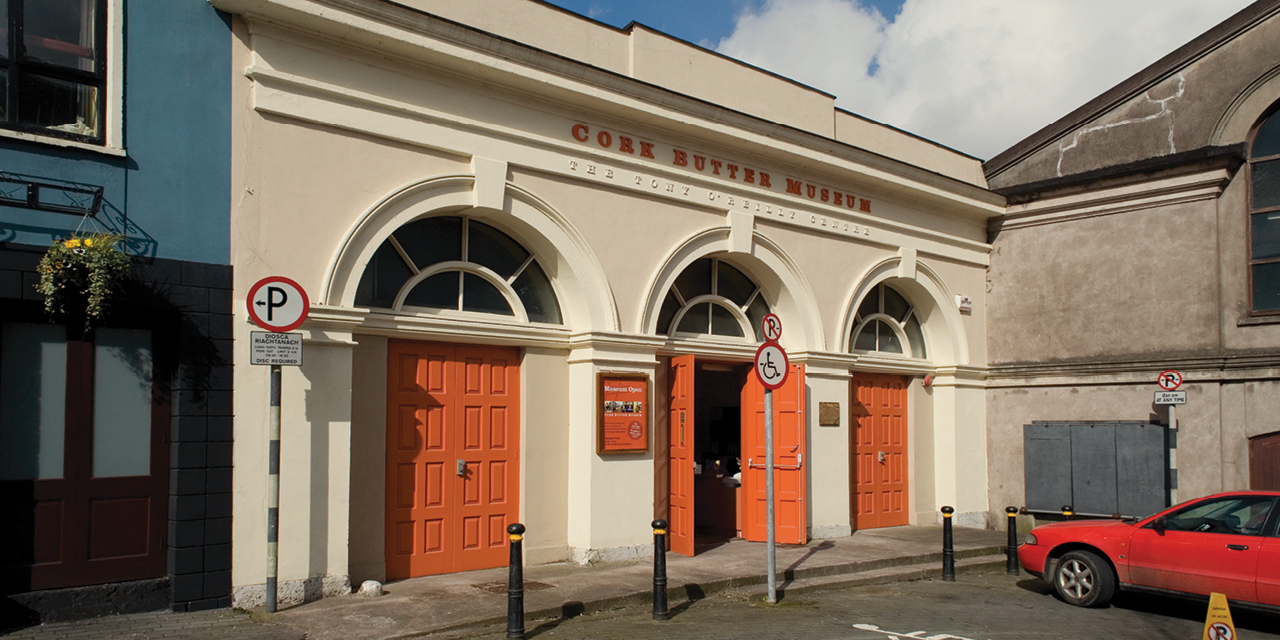The Butter Museum

A Visit to a Cork Institution that Explores Ireland's Long Affair with "Coagulated Sunlight."
// I have a conflicted relationship with butter. I love its flavour, and value it as a foodstuff. I lived in France in the 1990s, and became a fan, if not a connoisseur, of good butter, with a special fondness for Breton demi-sel butter on buckwheat crêpes. I still can't believe that I spent the formative decades of my life believing that margarine was the healthier alternative. (I may have had young arteries in the 1980s, but still, I still can't forgive the nutritionists who approved the lie that hydrogenated margarine, full of verifiably lethal trans fats, was the better fat.) Yet these days, I tend to avoid butter, except when I want to really boost the mouthfeel and flavour of a dish. In The Lost Supper, I devote a few dense paragraphs in the Italy chapter, "The Death of the Immortals," to explain why I think olive oil should be considered the Lord of Fats. It has become my g0-to as an oil for cooking, dressing, and to use as a dunk for sourdough breads. Our family of four goes through upwards of a litre a month (even now that drought in Spain and labour shortages have doubled the price). I guess I believe that plant-derived fats are healthier than animal-derived fats—though I'm perfectly willing to be proved wrong.

That said, I have nothing against butter: it's a fine food. Perhaps I should even be eating more of it. According to biological anthropologist Stephen Le, for optimal health we shouldn't be eating Paleo, but according to how our ancestors ate 500 years ago—five centuries, the thinking goes, being long ago enough to put our ancestral foodways beyond the reach of the Industrial Agricultural Revolution. Half a millennium ago, my ancestors were definitely consuming a lot of dairy. The Ukrainian side was probably slopping back kefir, yogurt, and other forms of fermented milk. And the Scots-Irish, on my mother's side, were almost certainly great lovers of butter.
I'm just back from 10 days in Ireland; a few in Dublin, but the rest spent in the south and west of that storied isle, which was emerald indeed after a cool and rainy spring.
I was reminded of how rural the country is, and how central agriculture is to its economy. And also how important one animal, the cow, is to Ireland's self-image. They dot the pastures and hillsides with brown and black. Almost all of them are pasture-fed, which is part of the brand. (Irish grass-fed beef was just granted a protected geographical indication, of the kind that Champagne and Roquefort cheese gets.) This is not California, where ten-thousand-head feedlots are the norm; family farms are far more common here.

In 43 AD, the Roman historian Pomponius Mela noted that Ireland, or Hibernia, as he called it—the "land of winter"—was so rich in grass that if cattle were allowed to eat here without restraint, they were likely to burst. (He also said some unkind things about the “savagery” of the Irish, but that, as the saying goes, is ancient history.) Astonishingly enough, cattle had arrived in Ireland 2000 years before Mela was writing. Just as astonishing, that same breed lives on in the west of the country: the Kerry cow, a small animal, only about 350 kilos, and almost all black, except for a touch of white on their udders. (They have a reputation for loving grass. In County Kerry the saying goes: “The Kerry cow never looks up for fear of missing a bite.”)
There are just 1,100 of them left, and I had the pleasure of having a cheese, Kells Bay cheese, which you can learn more about here, made with the milk of Kerry cows and dulse or dillisk, the edible seaweed of Ireland. A richly cremacious, umami delight it was, too. (There, I've already started to go all Irish on ya.)
Right: back to the butter. Butter is made from the cream of milk (goat, sheep, cow, water-buffalo, yak, etc.), which is churned in order to damage the milkfat globules, causing them to stick together in large, solid masses. Butter is a hop, if not a leap, towards immortality: it lasts longer than liquid milk—ghee, the Indian form of clarified butter, can remain edible for up to six months—though not as long as hard cheeses. In Dublin, I spent a rainy morning at the National Museum of Archaeology (free, like so many major museums in Dublin), where, among the beautifully-wrought swords and longboats, I was delighted to locate the "bog-butter" exhibit. If any proof were needed that the Irish have been consuming dairy for a long time, here its is: a wooden churn, discovered in a bog (where anaerobic conditions preserve organic remains for centuries).
"Milk produced in remote summer grazing was made into butter and preserved in bogs for later consumption or sale," according to the accompanying sign. "Abandoned or forgotten, it is often found today in bogs, in loose lumps or in containers of wood, skin or bark." This one had been dated to the 13th century. Atop it was a brownish-white mass, reminiscent of a lightly-toasted marshmallow. It looked food-like, if not esculent. (Would I try it on a dare? No, no I wouldn't.)

I did taste a far more appetizing form of butter in the small town of Dungarvan, in County Waterford. I spent the night at the Tannery, a restaurant, cooking school, and inn run by chef Paul Flynn. He gave me a copy of his cookbook, Butter Boy: Collected Stories and Recipes, and I had a fantastic dinner at his restaurant. ("I'm a butter, pot, eat, cook kind of guy," Flynn likes to say.) It began with soda bread (worthy of another dispatch!) and two kinds of butter: the first a deep-yellow pat of deeply flavoured butter, of the kind I'd been getting used to; the second a globe of "chicken-skin" butter. Yes, butter made with roasted, crumbled chicken skin. "It should be disgusting, shouldn't it?" said the waitress. "But it definitely isn't." And she was right: a straight to the pleasure-center, addictive savouriness. It sounded so wrong, but tasted so right.
So, when I arrived in Cork, I knew that, after the English Market (a fully-functioning city-center market, as yet only lightly tainted by tourism), I'd have to visit the Butter Museum. It's easy enough to find: you walk from the historic center towards the church tower with the golden salmon (nicknamed "Goldie") on its spire, in the heart of the Shandon district. Next to the church is the rotunda-shaped Firkin Crane Building, and next to it is the Butter Museum, located on the site of the 19th-century butter exchange.

There is a poem on the museum's wall, "Churning Day," by Nobel-winner Seamus Heaney, that invites us to see butter as "coagulated sunlight" "heaped up like gilded gravel in the bowl." Perfect: for that sunlight was converted, by the miracle of photosynthesis, into grass, which, after being digested in ruminant-reactors, in turn became liquid milk. The museum displays the shallow wooden "keelers," the vessels in which the cream removed from the top of the milk was allowed to ripen, before being transported to the churn. (Wooden, and, later, metal: the museum displays a rotary churn ingeniously mounted on a Bradbury sewing machine table.) The solidified butter was then wrapped and transported from the farms along "butter roads" to the Butter Exchange. From there, it was shipped around the world: Cork has one of the northern hemisphere's finest natural harbours, and ships sailing for the Americas stopped here for provisions. Including heavily-salted Cork butter.
Little-known fact: the industrialization of butter began in Europe, rather than in North America. In fact, in the late 1890s, Canadians and Americans prided themselves on the deep flavour of their butter. It was the Danish who produced the blander, if cheaper, and more shelf-stable, product, one that found a ready market in England. They'd come up with the process for pasteurizing cream, and inoculating it with a standardized strain of lactic-acid bacteria starter, of the kind that goes into most non-farmhouse cheeses. The tables have turned, though, and today most European butter is cultured—it's slightly soured with those good bacteria, while in the Americas we get "sweet cream butter," which is as bland as the 19th-century Danish export product.
Irish butter is also of the "sweet cream" kind, but the widespread grass-feeding of cows in Ireland confers a deeper, richer flavour, and that distinctive colour, derived from the carotene in the pasturage. (Many butters are artificially yellowed with annatto seed.) On video screens, the Butter Museum shows the marketing of Kerrygold butter, pedalled in the Americas with the same kind of kitsch-heavy Leprechaun-schmalz as Irish Spring and Lucky Stars. One thing about Irish butter: because the cows are grass fed, it tends to be softer than North American butter from grain- and silage-fed cows.

The Cork Butter Market closed its doors in 1924, after the rise of mechanized creameries began to siphon off the supply of liquid milk, and refrigeration reduced the need for heavily-salted butter. (One of the Market's biggest customers was India, which bought up cans of tinned ghee, see above.)
Roaming the two-storey Museum, which includes displays of glazed crocks and satin-lined butter boxes, and stamps for printing labels, I imagined how I'd feel if I were a committed vegan: this would all look like abominable propaganda for an industry built around animal suffering. I understand that point of view, but I also believe that nowhere is this less true than it is in Ireland. This is the land of the non-industrial cow, and it has been since time immemorial. The Iliad of medieval Ireland was The Tain, an epic poem schoolchildren memorize as the "Cattle Raid of Cooley." It was all about the proud, and already ancient, tradition of rustling cattle. Cows were as valuable as gold, and their possession conferred wealth, prestige, and independence. But they were less about providing meat than in a renewable supply of protein in the form of liquid milk and its derivatives—including la crème de la crème (or rather, la solide de la crème), butter.
I probably wouldn't be around without it. That butter, along with potatoes—and perhaps the minerals from shore-foraged seaweed—undoubtedly nourished some of my ancestors. So, while I'm willing to cast shade on feedlots and hormone-injected Friesian "white-water" factories, I also believe it's worthwhile to salute the venerable human-animal collaboration known as dairying. And Cork's Butter Museum is as dignified, and thought-provoking, a salute as I've seen.
You'll find opening hours, location, and all the other details you need to visit here:


